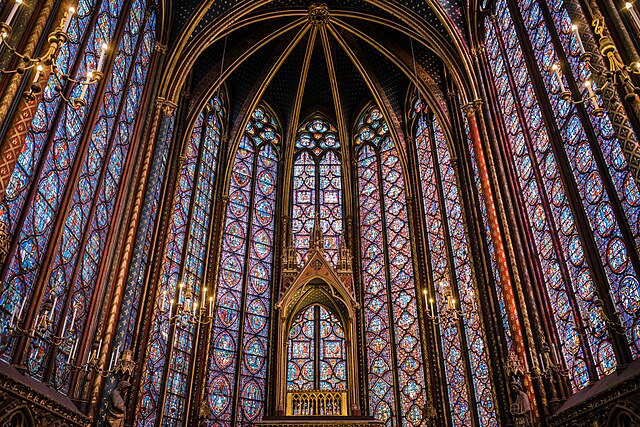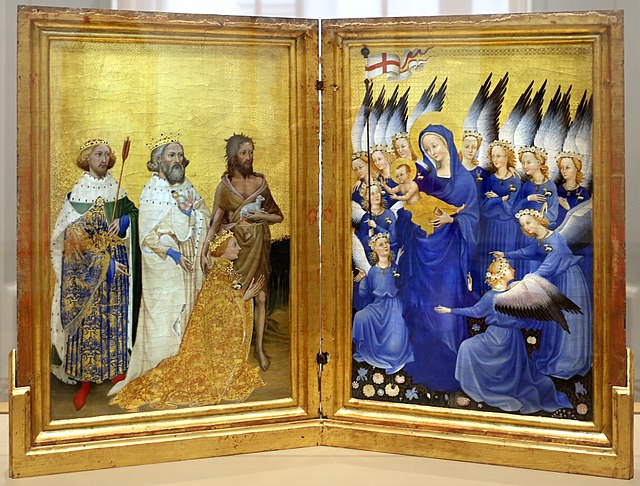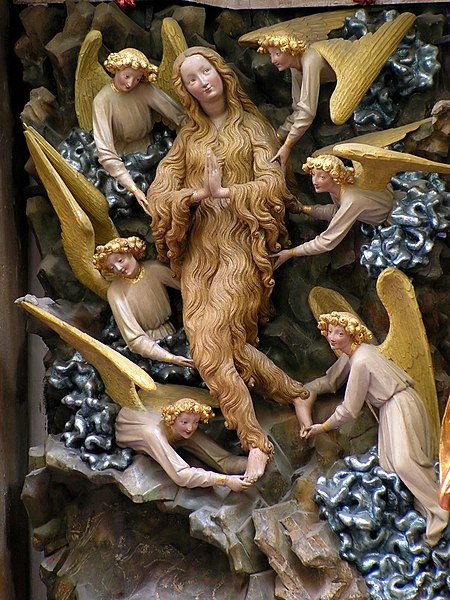Veit Stoss was a leading German sculptor, mostly working with wood, whose career covered the transition between the late Gothic and the Northern Renaissance. His style emphasized pathos and emotion, helped by his virtuoso carving of billowing drapery; it has been called "late Gothic Baroque". He had a large workshop, and in addition to his own works there are a number by pupils. He is best known for the altarpiece in St. Mary's Basilica in Kraków, Poland.
Wooden Altar of Veit Stoss at St Mary's Church in Kraków
Blind Veit Stoss with granddaughter by Jan Matejko (1865), National Museum in Warsaw
Angelic Salutation (1517–1518) in the St. Lorenz Kirche, Nuremberg
The Angel Raphael and the young Tobias. Limewood. 97 cm (38 in), (Germanisches Nationalmuseum, Nuremberg)
Gothic art was a style of medieval art that developed in Northern France out of Romanesque art in the 12th century AD, led by the concurrent development of Gothic architecture. It spread to all of Western Europe, and much of Northern, Southern and Central Europe, never quite effacing more classical styles in Italy. In the late 14th century, the sophisticated court style of International Gothic developed, which continued to evolve until the late 15th century. In many areas, especially Germany, Late Gothic art continued well into the 16th century, before being subsumed into Renaissance art. Primary media in the Gothic period included sculpture, panel painting, stained glass, fresco and illuminated manuscripts. The easily recognizable shifts in architecture from Romanesque to Gothic, and Gothic to Renaissance styles, are typically used to define the periods in art in all media, although in many ways figurative art developed at a different pace.
Image: Cenral tympanum Chartres
Image: Sainte Chapelle Interior Stained Glass
Image: Anonimo inglese o francese, dittico wilton, 1395 99 ca. 01
14th Century International Gothic Mary Magdalene in St. John Cathedral in Toruń.








